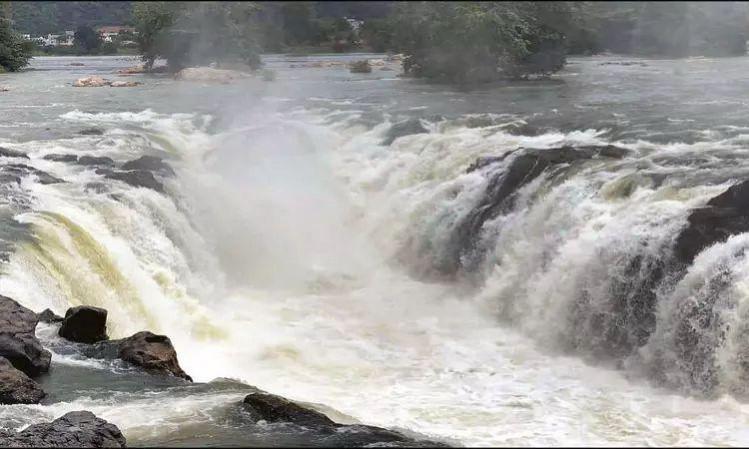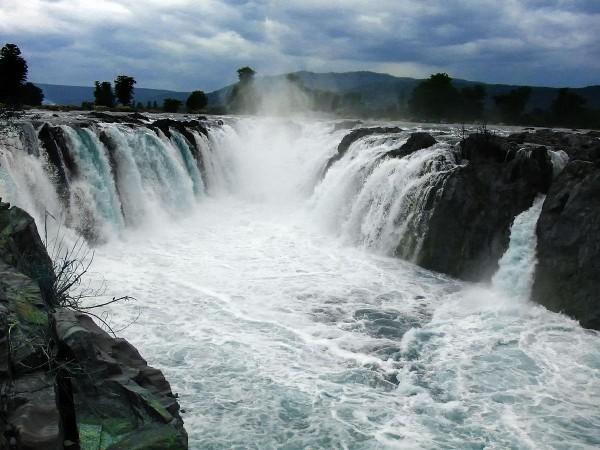
The Hogenakkal Waterfalls in Tamil Nadu have become a center of attention due to a dramatic increase in water flow, driven by intense rainfall in the Cauvery catchment areas. This surge is a result of the southwest monsoon, which has caused a significant rise in inflows into Karnataka's key reservoirs, Kabini and Krishna Raja Sagar (KRS). These reservoirs have reached full capacity, prompting the release of excess water into Tamil Nadu, creating a spectacular yet concerning scene at the waterfalls.
To ensure the structural safety of these dams, authorities have opened the floodgates, releasing substantial amounts of water into the Cauvery River. Official data reveals that 21,000 cubic feet per second (cusecs) of water have been discharged from the Kabini dam, while the KRS dam has released 23,000 cusecs, totaling 44,000 cusecs into the river. This heavy discharge is now flowing into Tamil Nadu through the inter-state border at Biligundlu, causing a surge downstream at Hogenakkal in the Dharmapuri district.
On Friday, the inflow at Hogenakkal was recorded at 18,000 cusecs, which increased steadily over the next 24 hours. By 6 p.m. on Saturday, the flow had surged to 32,000 cusecs, and by Sunday morning, it had intensified to 57,000 cusecs. This significant rise in the river's volume has brought the Hogenakkal Main Falls, Sinipalls, and Aintharvu streams to life, with water dramatically cascading over rocks, attracting onlookers from afar.
Beautiful view of #Hogenakkal ?,
— INDIAN WEATHER MAN ?️?️ (@sanjayweather_c) July 26, 2024
95,000 c/s water View #MetturDam will reach 100 feet on Sunday, ? pic.twitter.com/hZMZMDcEeu
In response to the rising water levels, the district administration has prohibited tourists from bathing in the waterfalls for the second consecutive day. This precautionary measure is in place due to concerns that water levels could rise further as Karnataka continues to release excess water from its dams. Officials from the Central Water Resources Department are closely monitoring the river flow at Biligundlu, a key gauging point on the Tamil Nadu-Karnataka border.

The continuous monsoon showers show no signs of abating, keeping authorities on high alert for potential flood-related contingencies in low-lying areas. District officials have urged local residents and tourists to stay away from the riverbanks and avoid venturing into water bodies until the situation stabilizes. The Hogenakkal Waterfalls, often referred to as the "Niagara of India," is a popular tourist destination known for its breathtaking beauty and therapeutic properties.
Located on the Cauvery River in the Dharmapuri district of Tamil Nadu, near the Karnataka border, the name "Hogenakkal" is derived from the Kannada words "hoge" (smoke) and "kal" (rock), referring to the smoky appearance of the water as it cascades over the rocks. Historically, the Hogenakkal Waterfalls have been a site of both natural wonder and occasional peril, with similar events occurring in the past due to heavy monsoon rains.








